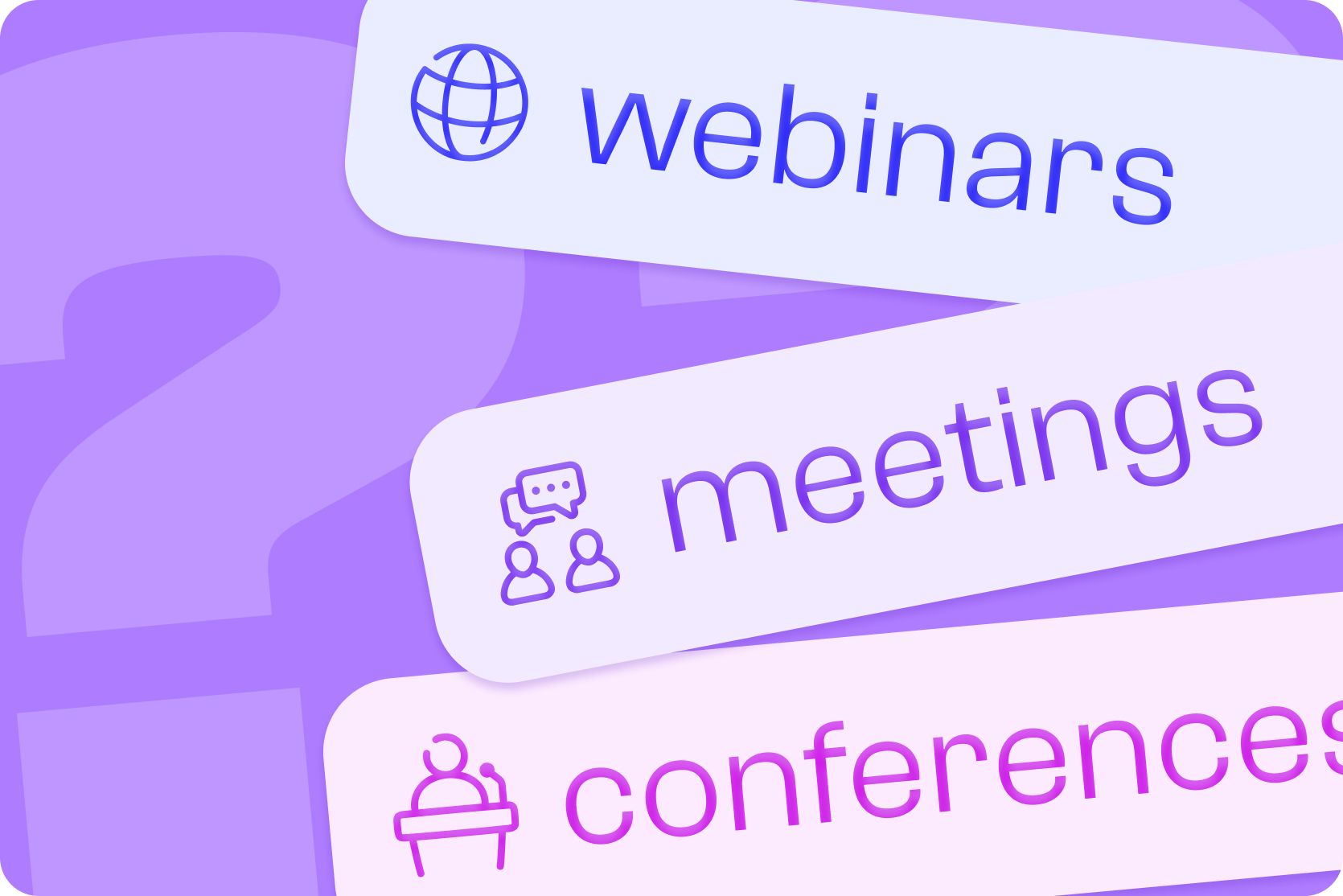Webinars, online meetings, or video conferences – what's the difference?
Learn how to distinguish between webinars, online meetings, and video conferences and choose the ideal format for your business.
Autor: Webinars tim
Datum: 1 Apr, 2025

In today's digital business environment, virtual communication has become essential. Terms like webinars, online meetings, and video conferences are often used interchangeably, but they actually represent different formats with specific purposes and features. Understanding these differences will help you choose the right tool for your specific needs and maximize your communication effectiveness.
Webinars: One-to-many communication
Webinars (web + seminars) are primarily designed for knowledge sharing, education, and marketing to larger audiences.
Key characteristics of webinars:
- Audience size: Typically larger (from dozens to thousands of participants)
- Communication flow: Primarily one-to-many, with presenters delivering content to an audience
- Interaction: Limited and controlled by presenters (polls, Q&A sessions, chat)
- Preparation level: High (requires planning, structured content, visual materials)
- Duration: Usually 45-60 minutes
- Recording: Almost always recorded for later use
- Registration: Typically requires pre-registration
Best used for:
- Educational presentations
- Product demonstrations
- Thought leadership
- Lead generation
- Customer training
- Marketing campaigns
The Webinars.rs platform is specifically designed to optimize the webinar experience, with features like registration management, engagement tools, and comprehensive analytics.
Online meetings: Collaborative discussions
Online meetings focus on collaboration, discussion, and decision-making among a smaller group of participants.
Key characteristics of online meetings:
- Audience size: Smaller (typically 2-15 participants)
- Communication flow: Many-to-many, with all participants actively contributing
- Interaction: High and continuous, with everyone expected to participate
- Preparation level: Moderate (agenda, but less formal structure)
- Duration: Variable, often 30-60 minutes
- Recording: Sometimes recorded, but not always
- Registration: Usually by invitation only
Best used for:
- Team meetings
- Project updates
- Client consultations
- Sales calls
- Brainstorming sessions
- Decision-making discussions
Video conferences: Formal multi-location meetings
Video conferences are more formal meetings that connect multiple locations, often with specialized equipment.
Key characteristics of video conferences:
- Audience size: Medium to large (can be dozens or more)
- Communication flow: Many-to-many, but often more structured
- Interaction: Moderate, usually with a facilitator managing participation
- Preparation level: High (formal agenda, technical setup)
- Duration: Often longer (1-2 hours or more)
- Recording: Frequently recorded
- Technical requirements: May require specialized equipment in conference rooms
Best used for:
- Board meetings
- Shareholder meetings
- Company-wide announcements
- Multi-office collaboration
- Formal presentations with Q&A
Choosing the right format
When deciding which format to use, consider these questions:
- What's your primary goal? Education/marketing (webinar), collaboration (meeting), or formal multi-location communication (video conference)
- How many participants do you expect? Larger audiences are better served by webinars
- What level of interaction do you need? More interaction means smaller groups
- How formal does the event need to be? More formal events may require video conferencing
Conclusion
Understanding the differences between webinars, online meetings, and video conferences allows you to choose the most effective format for your specific needs. The Webinars.rs platform specializes in creating professional webinar experiences that help you educate, engage, and convert your audience. For collaborative team discussions, standard meeting tools may be more appropriate, while formal multi-location events might require dedicated video conferencing solutions.
By selecting the right format, you'll ensure more effective communication, better engagement, and ultimately, better results for your business.